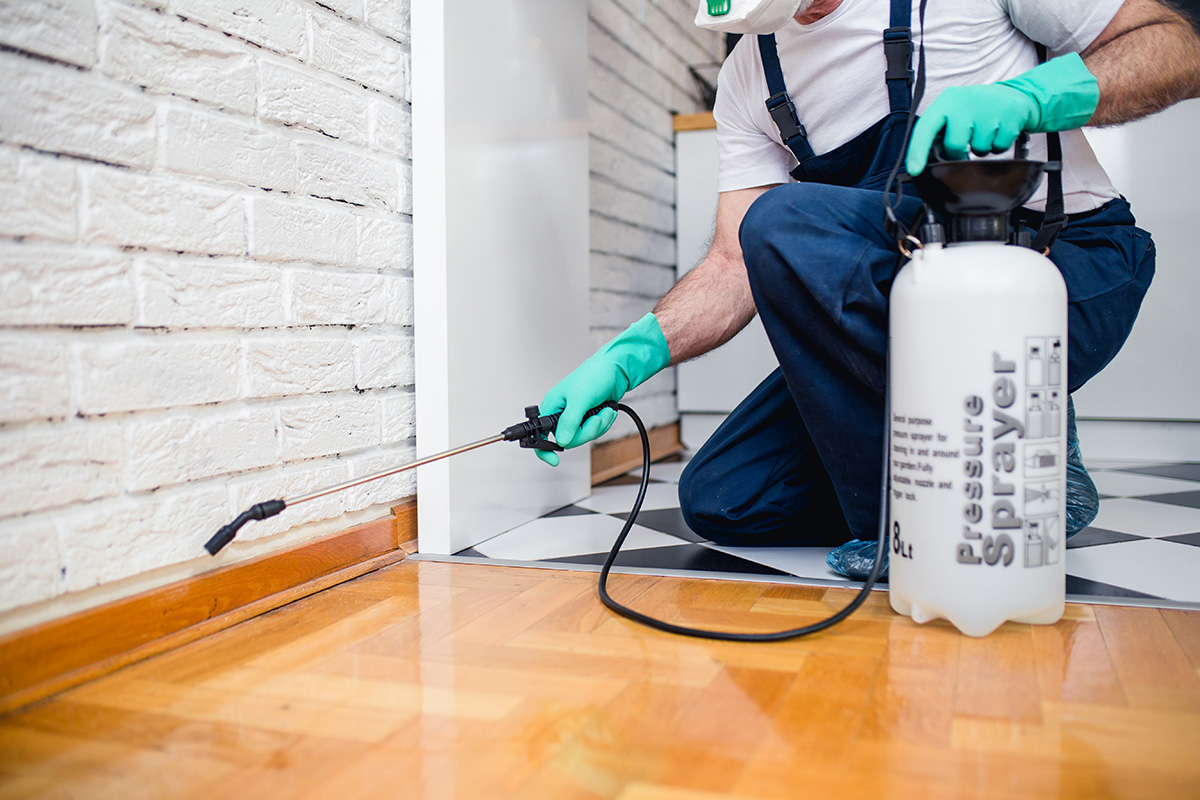A1 Charlotte Pest Control Companies - Your Regional Pest Experts
Bed Pest Therapy Malfunction: Comparing Chemical Vs. Non-Chemical Solutions
In the realm of parasite control, particularly when handling the consistent issue of bed bugs, the option in between chemical and non-chemical treatment solutions can be an essential one. Both strategies provide distinctive advantages and disadvantages, influencing elements such as performance, safety factors to consider, and overall price. By analyzing the nuanced information of each approach, a clearer understanding of which path to pursue in attending to a bed pest infestation can be achieved.
Effectiveness of Chemical Therapies
Chemical therapies for bed pest invasions have actually been extensively acknowledged for their potent and rapid efficacy in getting rid of these parasites. When taking into consideration the performance of chemical treatments, it is critical to comprehend that they can supply a fast and complete remedy to a bed bug issue.
Additionally, chemical therapies have the advantage of offering recurring impacts, suggesting that they can proceed to get rid of bed insects even after the preliminary application. This recurring action is particularly beneficial in combating any kind of prospective re-infestations. Additionally, the quick action of chemical therapies can bring alleviation to individuals dealing with severe bed insect invasions, enabling them to regain control of their space quickly.
Safety And Security Interest In Chemical Solutions
One crucial aspect that requires cautious factor to consider when making use of chemical solutions for bed bug treatment is making certain the safety of residents and the atmosphere. Exposure to certain chemicals utilized in bed pest therapies can lead to breathing problems, skin inflammation, or other unfavorable reactions, particularly in individuals with pre-existing conditions or level of sensitivities.
In addition, the environmental impact of chemical remedies is another significant consideration. Some chemicals made use of in bed insect treatments may be damaging to useful insects, wildlife, and ecosystems if they seep right into the soil or water systems. It is essential to make use of chemical treatments judiciously, adhering to safety and security guidelines, and taking into consideration less harmful alternatives to mitigate these threats and make sure the safe and reliable administration of bed bug problems.
Benefits of Non-Chemical Approaches
Considering the possible security concerns and ecological influence related to chemical options for bed bug therapy, checking out non-chemical approaches offers an appealing alternative with a number of distinct advantages. Non-chemical approaches provide a safer choice for households, particularly those with pet dogs, individuals, or youngsters conscious severe chemicals. These strategies get rid of the risks of direct exposure to toxic compounds, lowering the potential for negative wellness impacts. Furthermore, non-chemical therapies are ecologically pleasant, as Go Here they do not add to air or water pollution, making them a lasting selection for pest control.
Furthermore, non-chemical solutions can be efficient in targeting bed bugs, consisting of hard-to-reach locations where chemical treatments may not permeate - A1 charlotte pest control companies. Approaches such as warm treatment, vacuuming, vapor cleaning, and cushion coverings supply detailed removal without the use of hazardous chemicals.
Limitations of Non-Chemical Treatments

Furthermore, non-chemical therapies typically need multiple applications to achieve successful obliteration. This can be lengthy and may not always guarantee full removal of all bed bugs and their eggs, specifically in hidden or hard-to-reach areas.
In addition, the success of non-chemical therapies heavily counts on appropriate application and thoroughness, which can be testing for individuals without professional experience. Insufficient application of non-chemical approaches might result in incomplete removal, causing relentless infestations and the need for additional therapies.
As a result, while non-chemical treatments have their advantages, it is vital to recognize these limitations and consider them when establishing one of the most reliable approach for handling bed bug infestations.
Cost Contrast: Chemical Vs. Non-Chemical Options
Given the limitations related to non-chemical treatments, a vital facet to examine in the context of bed bug monitoring is the expense comparison in between chemical and non-chemical alternatives. Chemical treatments usually involve the application of pesticides by experts, which can range from $250 to $900 per area, relying on the seriousness of the problem and the size of the location to be treated. On the other hand, non-chemical treatments like warmth therapy or heavy steam can be much more costly, with prices varying from $1,000 to $6,000 for an entire home. look at this now While the preliminary expense of chemical therapies may appear lower, multiple treatments might be needed to totally eradicate the problem, possibly increasing the general expense. On the various other hand, non-chemical choices might offer an extra environmentally friendly and lasting service, although they can be cost-prohibitive for some people. Inevitably, when thinking about the price of bed pest therapy choices, it is very important to consider the in advance expenditures against the effectiveness and long-lasting sustainability of the picked method.
Conclusion

Taking into consideration the prospective safety concerns and ecological influence linked with chemical options for bed bug therapy, checking out non-chemical methods presents a promising option with several distinctive advantages.Provided the limitations linked with non-chemical treatments, an important facet to examine in the context of bed bug monitoring is the expense comparison between chemical and non-chemical options. In comparison, non-chemical therapies like warm treatment or vapor can be much more pricey, with costs varying from $1,000 to $6,000 for an entire home. While the first expense of chemical therapies may appear lower, several therapies might be required to completely eradicate the invasion, possibly increasing the general cost.In verdict, when comparing chemical and non-chemical bed insect therapy options, it is necessary to take into consideration efficiency, safety, benefits, constraints, and cost.